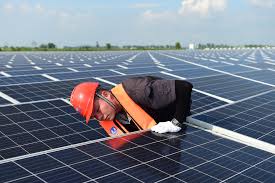The landscape for Chinese solar panel manufacturers operating in Southeast Asia is increasingly fraught with uncertainty. With the United States cracking down on what it sees as tariff circumvention, these firms face tough choices: stay and weather the storm or relocate to other markets. This article delves into the complexities of this situation, analyzing the challenges, potential markets, and future outlook for these manufacturers.
The US Tariff Crackdown
Background on Tariff Workarounds
Chinese solar panel manufacturers have long sought ways to circumvent US tariffs. By shifting production to Southeast Asian countries like Cambodia, Malaysia, Thailand, and Vietnam, they aimed to maintain their competitive edge in the lucrative American market. However, recent moves by the US Department of Commerce have thrown a wrench in these plans.
Anti-Dumping and Anti-Subsidy Investigations
In May, the US launched anti-dumping and anti-subsidy investigations into crystalline silicon photovoltaic cells from Southeast Asia. This action was prompted by allegations from domestic solar companies, who claimed that China was using these countries to dodge tariffs.
Impact of Investigations on Production
In response to the investigations, many Chinese firms have halted production, citing “facility upgrades” or “maintenance.” Workers have been furloughed, and the future of these manufacturing operations remains uncertain. The temporary exemption from anti-dumping and countervailing duties, granted in 2022, expired recently, further complicating the situation.
Challenges for Chinese Manufacturers
Dependence on the US Market
The US market is critical for Chinese solar panel manufacturers. Losing access to it due to tariff enforcement can have significant financial repercussions. Analysts highlight the need for these companies to find alternative markets to sustain their business.
Potential Follow-Up by Other Western Countries
There’s a real risk that other Western countries, particularly in the European Union, might follow the US lead and implement similar measures. This possibility adds another layer of uncertainty for Chinese manufacturers.
Economic and Operational Strains
The investigations and potential tariffs impose economic and operational strains. Halting production and furloughing workers are short-term responses, but long-term strategies are needed to navigate this turbulent environment.
Exploring Alternative Markets
Middle East as a Viable Market
Terence Chong Tai-leung, an economics professor at the Chinese University of Hong Kong, suggests that Chinese manufacturers should capture the demand in the Middle East. This region, with its sunny climate and growing interest in renewable energy, presents a promising alternative.
Opportunities in Developing Countries
Other major developing countries also offer potential. Markets in Africa, South America, and parts of Asia are expanding their renewable energy capacities, creating opportunities for Chinese manufacturers to diversify their customer base.
Strategic Shifts in Manufacturing
To adapt, some firms might consider relocating their manufacturing bases to regions less affected by US tariffs or political pressures. This strategic shift could mitigate risks and open new avenues for growth.
Case Studies: Firm Responses
Company A’s Decision to Halt Production
One notable example is Company A, which recently announced a halt in production for “facility upgrades.” This decision, while framed as routine maintenance, reflects the broader industry trend of pausing operations amidst uncertainty.
Company B’s Workforce Furloughs
Similarly, Company B has furloughed a significant portion of its workforce. This move, although temporary, underscores the financial pressures and operational challenges faced by firms in the current climate.
Company C’s Market Diversification Efforts
In contrast, Company C has proactively sought new markets in the Middle East and Africa. By diversifying its market reach, it aims to reduce dependency on the US and navigate the shifting global trade landscape more effectively.
Analyst Insights
Terence Chong Tai-leung’s Perspective
Chong emphasizes the importance of capturing demand in the Middle East and other developing countries. He believes that while losing the US market is a setback, there are ample opportunities elsewhere that can compensate for this loss.
Broader Economic Implications
Analysts also point to the broader economic implications of these trade shifts. The realignment of manufacturing bases and market focuses could reshape global solar industry dynamics and influence future trade policies.
Future Outlook for Chinese Solar Manufacturers
Short-Term vs. Long-Term Strategies
In the short term, Chinese solar panel manufacturers might continue to face production halts and worker furloughs. However, in the long term, strategic market diversification and operational adjustments could stabilize the industry.
Adapting to Regulatory Changes
Adapting to regulatory changes is crucial. By staying agile and responsive to new trade policies, manufacturers can better position themselves to thrive despite ongoing uncertainties.
Innovation and Technological Advancements
Innovation and technological advancements will play a key role in maintaining competitiveness. Investing in new technologies and improving production efficiencies can help firms remain viable in a challenging market environment.
The future of Chinese solar panel manufacturers in Southeast Asia is clouded by uncertainty, primarily driven by US tariff measures and potential follow-ups from other Western countries. However, by exploring alternative markets and adapting to regulatory changes, these firms can navigate the challenges ahead. The industry’s resilience and ability to innovate will be critical in ensuring its long-term success.




